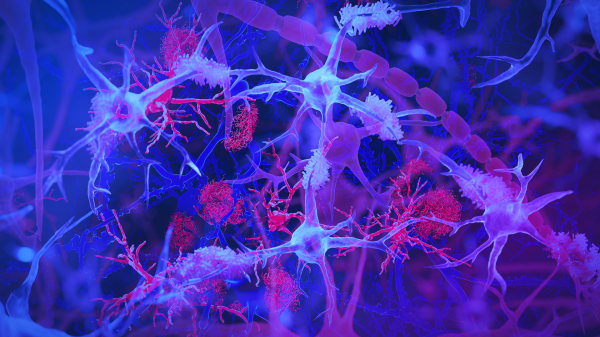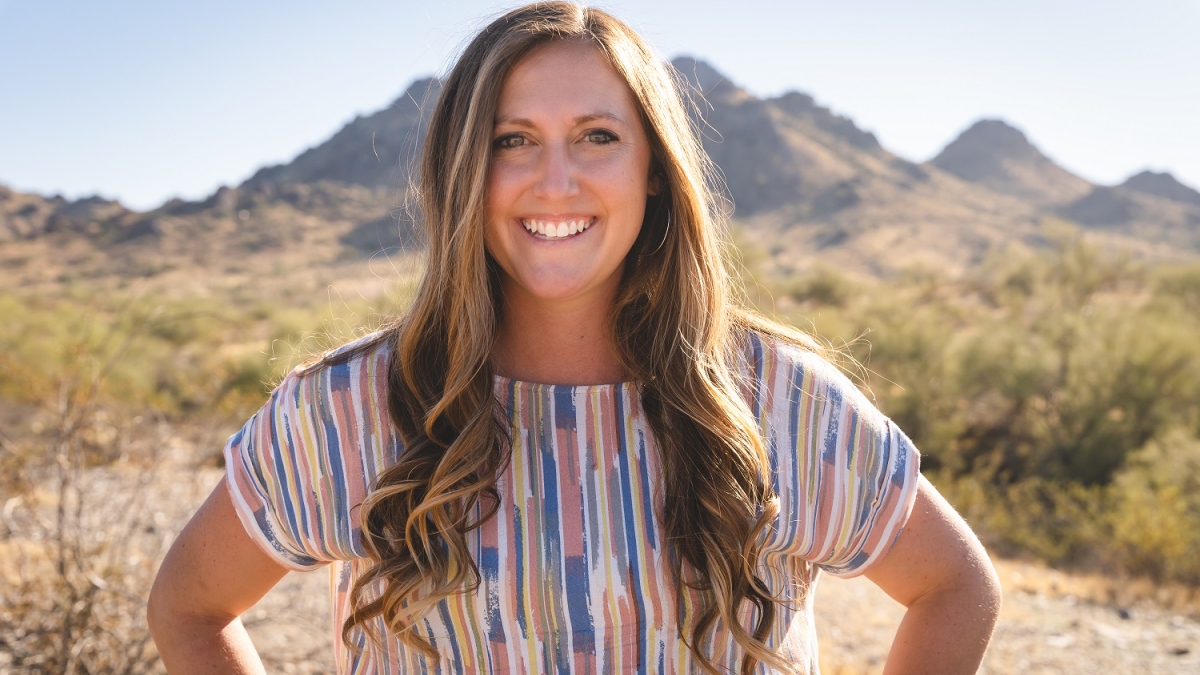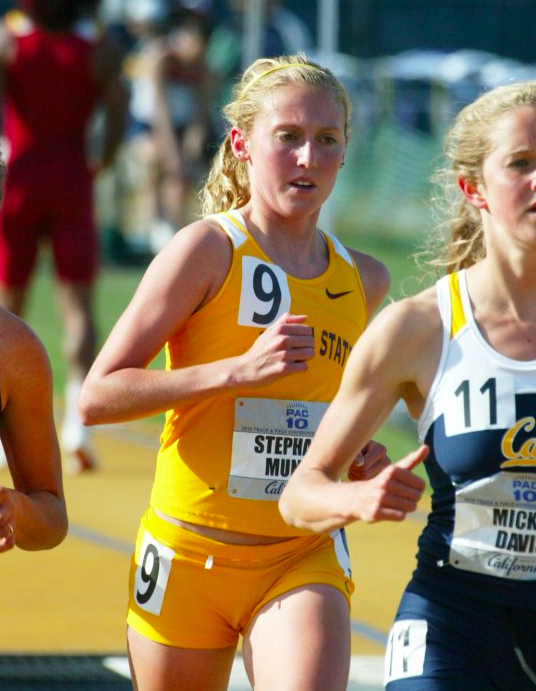As someone who spent a year and half on Arizona State University's track and field team before she was allowed to compete, Stephanie Mundt understands a runner’s drive as well as the health issues that can stop it on the track. That’s why this College of Health Solutions kinesiology grad focuses her physical therapy practice Volante PT & Performance on helping runners keep running.
Mundt, who was a successful high school track athlete, joined the ASU team as soon as she got on campus as a freshman, but an eating disorder kept her on the bench. “I was about 90 pounds, and the medical staff told me I couldn’t run with the team until I reached 100 pounds,” she said. “I would go to team meetings and sometimes be with the team at meets, but it was really hard emotionally.”
Still, Mundt kept running on her own while working hard to gain the weight that would make her a competitive team member. This is not a woman who gives up easily, a trait evidenced by her own loyalty to the running lifestyle despite having suffered 12 stress fractures.
“Once you’ve had a stress fracture, you’re at a significantly increased risk for another,” Mundt explained. Such fractures can stem from abnormal stresses to normal bone, but they also can result from normal stresses to abnormal or weakened bone. That’s the issue Mundt faced: low bone density brought on by an eating disorder, a condition more common in women than men.
"I was told I had a leg-length discrepancy that was probably contributing to my stress fractures, that I had tight hip flexors, that my glutes were weak. It felt like people were telling me there was something wrong with me,” Mundt recalled. “No matter how much I worked on it, it didn’t get better. You get to a kind of hopeless place, a feeling that your body can’t handle the things you want to do.”
Although Mundt was heartbroken and sidelined by her running-related injuries, she now sees the positive impact of those setbacks.
“They served as incredible learning experiences, helping me more quickly identify other runners’ issues and giving me insight into how best to help people,” she said, adding, “Any time I see someone now with a stress fracture, I refer them to a registered dietitian. Most of the time, there’s some low-hanging fruit there — making sure they’re getting enough calories.”
Her own experiences have made Mundt even more determined to offer the patients at her physical therapy clinic three things she believes are vital to the healing process: autonomy, information and empowerment.
“I’ve been educated, but I don’t know the patient’s body as they do, so they are the ones in charge, and my role is to give them the best information to make their own decisions,” she said.
Empowering patients to believe in their abilities is also key, she added. “You can be injured and still be resilient. The healing power of the body is pretty amazing.”
Mundt spoke recently to the College of Health Solutions about her undergraduate experience and its influence on her current work with female runners.
Stephanie Mundt as a sophomore at ASU.
Question: Why do you focus your practice on supporting women athletes?
Answer: There’s something called the female athlete triad that includes low bone-mineral density, disordered eating and menstrual dysfunction. That’s what I had, and we need to take these things seriously, especially for the young female population that may be influenced by the fitness and diet culture. I work with males, too, but I think I shine most in working with women because often, I’ve had similar experiences.
Q: How did your experiences at ASU and the College of Health Solutions help you in your career?
A: I wasn’t sure that I wanted to go to physical therapy school right out of my undergraduate studies. It was between that and veterinary school, so I also took classes that might be necessary for the vet degree. But being in and around the athletic department at ASU was helpful because I got to shadow the physical therapist and learn about the PT career. I also was in ASU Barrett, The Honors College, and my thesis was on the impact of hippotherapy – horse physical therapy – on kids with autism. That exposed me to a realm of physical therapy I didn’t know about. ASU really opened my eyes to different possibilities within this profession.
Q: What impact on health do you have in your role as a physical therapist?
A: One of the greatest things is when you start seeing your patients change. Here’s someone thinking, “I’m never going to run again,” and then you start seeing that person learn to believe in themselves again. Sometimes when they write reviews of my business, they say things like, “She helped me feel that I’m not broken anymore.” That’s absolutely the most fulfilling thing for me. Health is a field where you can make a huge difference in other people’s lives.
More Health and medicine

The surprising role of gut infection in Alzheimer’s disease
Arizona State University and Banner Alzheimer’s Institute researchers, along with their collaborators, have discovered a…

ASU, University of Wisconsin partner to empower Black people to quit smoking
Arizona State University faculty at the College of Health Solutions are teaming up with the University of Wisconsin to…

New book highlights physician wellness, burnout solutions
Health care professionals dedicate their lives to helping others, but the personal toll of their work often remains hidden.A new…

